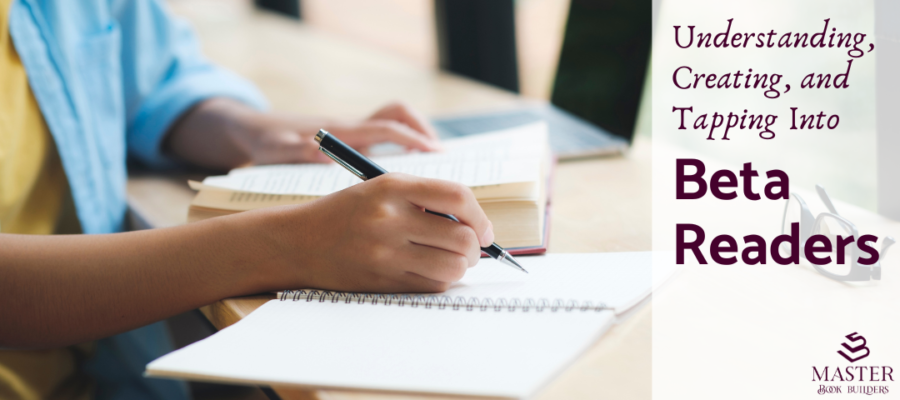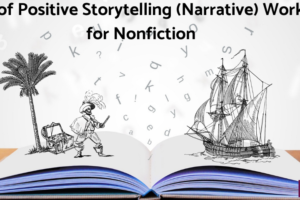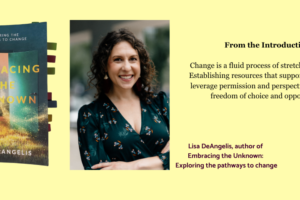Understanding, Creating, and Tapping into Beta Readers
Beta readers are invaluable resources for authors, providing fresh eyes and constructive feedback on your manuscript before it goes to print. Often, they uncover places where there is confusion or even a mistake you or your editor did not catch. Yes, it happens. Tom wrote about books and people not being perfect in this blog post. It’s a good read. I promise you that a typo here or a grammar issue there is normal in the uncorrected galley proof you send your beta readers. And beta readers are great at discovering them. This is a good thing, by the way. You want your book to be polished, and having insight from the people you have identified as your audience is the first step to a stellar result.
I should note, however, that in the end, beta readers are for testimonials. Some people say the ARC (advanced reader copy) people, who get the book when you think it’s ready for publication, are the testimonial readers, but we use beta readers for our testimonials. The uncorrected galley proof they receive is meant to inspire them to gush about it. Well, maybe not gush. But gush many of them do!
Here’s a detailed guide on how to find and effectively work with beta readers.
Finding Beta Readers
We tell our authors to start thinking about their beta readers from the get-go. This is a small group, generally 10 – 30 (although some folks may have more) people who are part of your core market – the audience you’ve identified as people who will buy and read the book. They should be interested in the topic and be willing to share their thoughts about the uncorrected galley proof, ahead of publication.
- Identify Your Needs
- Genre-specific feedback: Look for readers who enjoy and understand your book’s genre.
- Message-Focused: For nonfiction, you want readers who will resonate with your message.
- Target audience: Beta readers will be those people who represent your intended readership.
- Where to Find Beta Readers
- Online writing communities:
- Scribophile: I just learned of this site, which “is designed to connect you with beta readers.” I’m still learning about it, but it purports to have readers from all over the world. That’s a truly good thing. Check it out.
- Goodreads: Join specific groups and ask for beta readers. The one linked here has 27,000 members. Find others by searching ‘beta readers’ on Goodreads. Some of the smaller groups focus on nonfiction, so spend some time exploring Goodreads for this.
- Social media:
- Facebook: Join groups and participate in them! Do this well before the book needs a beta reader. Offer to be a beta reader for others in the group. Be sociable!
- Twitter: Use hashtags like #BetaReaders, #WritingCommunity, and #WritingaBook
- Instagram: I searched Google for “beta readers on Instagram” and was rewarded with a number of options. Try it.
- LinkedIn: For nonfiction, this is a gem! Remember to search for and connect with the people in your connections list or your followers list that you hope to invite to your beta reader list well before you need them. Engage with their content and provide value to their followers.
- Personal Network:
- Friends and family: Consider those who are honest and avid readers. Remember that family members might be too close to the story or idea, so don’t depend on only their help. You might be anxious for their praise, and that’s fine, but find other qualified beta readers also.
- Author networks: Connect with fellow authors who might exchange beta reading services like The Independent Author Network (IAN). Connecting to other authors like yourself will open up beta reader opportunities for you.
- Beta Reader Services:
- Reedsy: Professional beta readers available for hire.
- The Niche Reader: Reasonable pricing to secure beta readers.
- The Author Buddy: This service gets into serious evaluation of your writing. It’s primarily for fiction, but I suspect it could work for nonfiction, too.
- Online writing communities:
- Selecting Beta Readers: Answer these Questions
- Why: Why is this person good for your book?
- What: What will they bring to the table?
- When: Are they dependable? Will they get back to you in the timeframe you need? Will they be honest and not sugarcoat their comments? THIS IS VERY IMPORTANT.
- Where: Where will they support you? Online, in email, on Amazon?
- In writing: Will theybe willing to write an Amazon review once the book is finished? What about blurbs for the book cover? And content to show their remarks inside the book?
- How will they support you? Book reviews. Social promoting. Interviews. Introducing you to a favorite book podcast.

Working with Beta Readers
- Prepare Your Manuscript
- Polish it: Ensure your manuscript is as clean and polished as possible before sending it out. As an uncorrected galley, note that there may still be errors, and what you’re sending is ready for their eyes only.
- Clear instructions: Provide a list of instructions. We tell our beta readers exactly what we expect, including the timeframe to respond. You want responses within 2-3 weeks if possible.
- Remind them this is not a book review. They need only send a testimonial at this time.
- Set Expectations
- Feedback deadline: Agree on a reasonable turnaround time. We often give people extra time if they ask. We don’t offer it. We wait for them to ask. You want a good number of testimonials in the turnaround time, so giving people an ‘out’ from the start, is not a good idea.
- Scope of feedback: Clarify what you would like to see. We want our readers to look for flow, a clear throughline, and overall impact depending on the purpose of the book. This is primarily nonfiction. For fiction, you may want to know their thoughts on character development, plot, and ease of reading.
- Provide a Feedback Form
- Structured questions: While we have not done this yet, I think this is a great idea: Create a feedback form with targeted questions to help guide beta readers’ responses. You want to ask your readers for specific responses, but you don’t want to influence them. So doing this means being very careful in your wording.
- General impressions: Include sections for general impressions and any additional comments.
- Ask them how they would like to be recognized – in other words, what is their title and website. Adding their name, title, and website gives them support from you.
- Stay Organized
- Tracking feedback: Use a spreadsheet to track feedback.
- Follow-up: Send reminders close to the feedback deadline and thank them for their time and effort.
- Analyze Feedback
- Look for patterns: Focus on common themes and repeated comments.
- Prioritize changes: Decide which feedback to implement based on your vision and the readers’ insights.
- Express Gratitude
- Acknowledge contributions: Thank your beta readers in an email, online, and in the acknowledgments section of your book. Depending on how many you have, you may mention them separately or as a group.
- Offer a finished copy: Send them a free copy of the finished book as a token of appreciation.
Understanding the Role of Beta Readers
1. What they do: Beta readers read your manuscript before it’s published to give feedback on messaging and overall readability and offer testimonials relevant to how well the book achieved its purpose. In fiction, they may mention character development and plot.
2. What they don’t do: They are not professional editors. They provide subjective feedback based on their reading experience. When they begin to act like editors, be kind and thank them, but always then refer to the true editor of your book with any questions the beta readers have.
3. Why they are important: No matter how excellent a writer you are, no matter how excellent your editor is, the beta reader may find small errors or places of confusion. Beta readers may have positive suggestions on how to improve the book further. They may offer insight into the marketability of the book. Every comment from a beta reader is a gift, no matter how strange, off-topic, or critical. These are members of your reading audience. Give them the respect they deserve.
At Master Book Builders, we consider beta readers a necessary part of developing your book. We often search for and find beta readers who are outside of a client’s social circle or family, to round out the list of readers for their book. I stress again, begin your beta reader list far ahead of publication. And follow these suggestions to manage the feedback you get.
It’s been suggested that I perhaps create a short eBook about this topic. Those in favor, leave a comment.






2 Comments
Leave your reply.